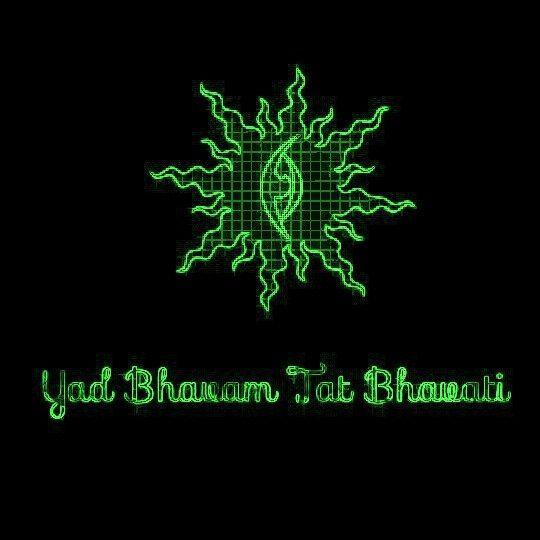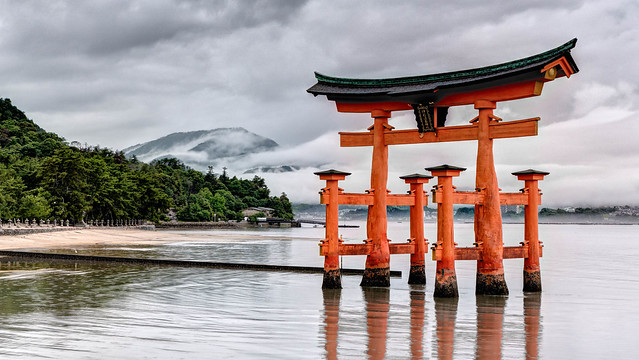Human species is extraordinarily diverse. Not just in terms of genetics and ethnicity, but also in terms of ideological, social, economic and cultural approaches. However, beneath all the obvious, superficial differences lie a few striking similarities that run as common threads among various civilizations. These shared commonalities may be due to long history of mutual support and communication, or might have developed separately in parallel, without any particular outside influence.
Thus, we can always find some resemblance between two distinct cultures. Here, I shall point out five striking similarities I’ve observed between the culture of my motherland, India, and that of one of my favourite countries – Japan.
Image from Public Domain : Itsukushima Shrine torii gate by Joe deSousa
Before I explain further, I have a confession to make. Almost all of my existing knowledge about the Japanese culture is from the anime/manga I’ve watched/read. Therefore, I cannot claim to have accurate awareness about the culture of ‘The Land of The Rising Sun’. Hence, kindly excuse me and point out any wrong conclusion I make here. 🙂
Image from Public Domain : Ganga River, Varanasi, India by PIVISO
Similarity # 1 : Honorifics
The Japanese have a well- developed system of hierarchy and use of honorifics, such as ‘-san’, ‘-sama’ for a noble person, ‘sensei’ for teacher, etc.. India too has a system of using honorifics. However, the main difference between the two cultures in this regard is that unlike the Japanese who have an established, common system throughout the country, the use of honorifics vary across the length and breadth of India. This is mainly due to the existence of numerous vernacular languages. Some examples of Indian honorifics include ‘Shri’ for a man (Sanskrit), ‘ji’ for all (Hindi) , Pandit for a scholar (similar to Sensei) , and ‘Sadguru’ for religious leader.
Similarity # 2 : Respect to elders
Both the cultures give a huge emphasis on expressing respect to elders, especially senior citizens. In India it is expressed by touching the elder’s feet for blessings. In Japan, the expression is through deep bows, care and words. Joint family systems are common in both, and the oldest member is often the head of the family.
Similarity # 3 : Conservative society
The Japanese and the Indian cultures might seem pretty conservative to the western world. And they are. Public displays of affection is often scorned at in most parts of India, and not so welcome in Japan. Hugs and kisses (between opposite genders) as casual greetings are a big ‘NO – NO’ in both countries.
Similarity # 4 : Martial arts
The Japanese connection to martial arts is very obvious, considering how the Samurai culture is well known across the globe. What is not known much to the western world is the rich martial history of India. While the Japanese have kendo , judo and karate (and many others ), the Indians have ‘kalari’ (often called the ‘Mother of Martial arts’ ) , silambam and gatka (and many others as well ). The interesting part here is that the martial art forms of both cultures share a lot of similarities, owing to cultural exchange that mainly happened through Buddhist monks.
Similarity # 5 : Local deities
Wherever you go in India, you would find a new God or Goddess. Local shrines and deities are part of Indian society. So it is for the Japanese. Both cultures have a rich history of worshipping nature, attributing divinely qualities to rivers, mountains, trees, etc.., often personifying them.




thank you for the beautiful information. I got an idea about both of the countries .
nice post sir.
LikeLiked by 1 person
I’m glad. Thank you 🙂
LikeLike
Also similarities between Shinto & Sanatan Dharma ( popular Hinduism ) is also an area to be explored the more I read and study about Shintoism & Taoism the more striking are the similarities – when Buddhism first encountered Taoism & Shinto in East Asia it found quite remarkable similarities and areas of convergence due to its Hindu origins , that was one reason why Buddhism found it so easy to adjust to sinic cultures of China, Japan & Korea.
LikeLiked by 1 person
Thank you so much for sharing this with us, @rahul75as. I don’t know much about shintoism or taoism. But I’ve felt that the tao concept of ying-yang is quite similar to the idea of purusha and prakriti of Indian philosophy.. Also, I believe shintoism involves worship of nature as gods and goddesses? If so, that would be a remarkable similarity too, just as you had pointed out.
LikeLike
I was watching a documentary on NHK World about “o-jizo” deities and their importance in Japanese culture – I recall great similarities between our native culture and Japanese traditions & beliefs . I keenly observe how deep the similarities between our two cultures are despite differences in economic & social indicators. Friend you do great commendable work through your blog keep up the good work . Wish we can someday become like the Japanese – perfectly blending modernity while preserving & practicing / valuing our old traditional ways too.
LikeLiked by 1 person
Thank you..your words are very encouraging. Yes, I hope we can have the perfect blend of ancient and modern. I do believe we have quite a nice mix of both even now, though we may not have the perfect one.
Thank you for visiting!😊
LikeLike
It is a good article, thank you) But really, you can find 5 similarities between any two cultures and most of them would already be covered in this list :))
LikeLiked by 1 person
True…if we take any two cultures, we will be able to find similarities. That’s natural (we all are humans afterall) . But I don’t think the list would be the same. Pardon my ignorance, but if you were to take a modern European country and an Asian country, you cannot probably find similarities no. 3 and 5..even 4, sometimes. I believe you find that most cultures would be covered in this list because you are possibly looking at it from an Asian perspective (as suggested by your profile name), and this list can be largely applied to prominent Asian cultures due to certain common cultural roots and exchange.
Thank you for commenting. 😊
LikeLiked by 1 person
I love this! Gorgeous pictures too! Koreans have very similar beliefs. (I’m half Korean.)
LikeLiked by 1 person
Thank you…Yeah! I’m a bit familiar with Korean culture too, mainly through Korean manhwa and K-dramas (not sure what they portray are reliable) and I can see the similarities..(Love you guys too!😍). Maybe one day, I’ll write a post on similarities between Korean and Indian culture..😊
LikeLiked by 1 person
Ooh! That would be awesome! Korean manhwa and K-dramas?? I need to look into those. Never heard of it. Thanks for sharing!
LikeLiked by 1 person
My pleasure! Thank you for visiting! 😊
LikeLiked by 1 person
Nice!
LikeLike
Thank you, Patrick!
LikeLike